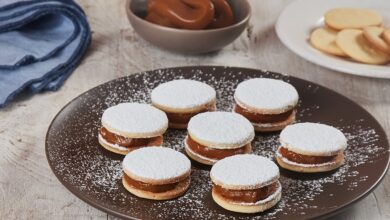What are the different types of thermal insulation of walls

Insulation is an essential element when it comes to avoiding cold and noise in our home. However, this insulation is not always up to the task, as it is often an aspect that is left aside during the construction of houses. Therefore, it is important to know what types of insulation exist and how to improve our quality of life with them.
Although Spain is not a particularly cold country, it is true that in certain places winter can be harsh. More serious is the problem with heat in summer, with temperatures frequently exceeding 40 degrees. In this context, insulating materials are of special importance, with which to better protect our home from these extreme temperatures. Something that is more important if we take into account that the interior thermal insulation of many homes in our country is deficient, due to the negligent way in which it has been built in Spain in the different real estate booms that the country has experienced.
Fortunately, in the market we have a good supply of materials with which to achieve quality thermal and acoustic insulation for our home. However, when considering how to insulate a wall, it is convenient to take into account the insulating capacity of each material, so knowing the properties of each of them will always help us. So let’s take action and learn about the different varieties that thermal insulation material offers us to better insulate our home.

Types of thermal insulation of walls
Mineral insulation: In this segment we find rock wool and fiberglass. Stone wool is made from melted volcanic rocks, while fiberglass is made from sand. Both materials have different levels of protection depending on their manufacture, they are easy to insert into walls, ceilings and floors and they do not have particularly high costs, since we are talking about a rather common insulator.
Synthetic insulation: In this case, petroleum products are used, mainly polystyrene, the typical white cork. In its expanded form we have a light material that can be manufactured in all kinds of formats and is easy to cut and place. In the case of the extruded format, this is usually used more in facades and roofs, due to its high waterproof power. In both cases, it is a good proposal to insulate walls from cold and noise, also coming in different densities, depending on what is necessary.
Ecological insulation: This group has two main protagonists. One of them is cork, of natural origin and from sustainable sources. In addition, since it can be left exposed, it is a good option for use as thermal insulation for walls without work. The other is the geotextile insulation, which is made from recycled textile remains, even forming part of the plasterboard with thermal insulation, offered by some manufacturers. Both materials share this ecological origin, in addition to a hypoallergenic manufacture that avoids problems with the presence of insulating particles in the air. In return, the densities offer is somewhat tighter and its cost somewhat higher.
Reflective insulation : These insulators have different multilayer designs and are generally made of polyethylene or similar materials. This insulation is anti-allergic and very easy to install. The greater the number of layers, the greater its insulating capacity. In addition, some products include layers of wadding, aluminum or interior bubbles, which improve their performance.
How to insulate a house from the cold?
At this point, we have the material, but we lack information on how to insulate our home from the cold. The main problem with the materials that we have been discussing is that their application requires completely reforming the walls, thus rethinking your home. In fact, the only material that could be applied to a wall without knocking it down would be cork, which can be seen on the wall and does not need to be covered.
This would leave us with the option of how to insulate a wall from the cold at home, without having to get involved in such complex works and with simpler solutions. One of them would be to cover the current walls with adequate insulation and place plasterboard on them. A cheaper proposal than knocking down walls and that can offer a similar thermal performance, provided that insulators are chosen that are suitable for the thermal characteristics of the home.
As a simplified alternative, if you have holes in the walls through which the cold seeps in, it is possible to resort to expanding foams. These can be useful for filling spaces in walls through which heat is lost, such as plug sockets or the like. Obviously, we are not going to enjoy the same effect as if we resorted to systems mounted indoors through the thermal insulation that we have discussed, but at least it is a solution that will help a little to improve the insulation of our home. In addition, the price of the foams is relatively cheap and their installation is very easy to carry out.

And the windows?
As an extra, we want to leave you with a little homemade trick, with which to insulate your windows at low cost. You will only need bubble wrap and a water sprayer. You can opt for a manual product or one of the best battery-powered sprayers you can find on the market, in order to achieve better coverage.
Assembly is very easy. First of all, we pour a thin layer of water on the glass with the sprayer, covering the entire mirror, but without overdoing it. Next, we put the bubble wrap on the glass. The water that we have previously sprayed will act as “glue”, while the bubble wrap will serve as thermal insulation. The result is an economical insulator, with which to reduce heat losses and the noise that enters through the window panes. A very practical idea, especially if you have large windows at home.
By the way, as a finishing touch to this economic proposal, it is advisable to use weather stripping for windows, which allow you to adequately isolate the closing area of the same. These weatherstrips are made of rubber, rubber or silicone, they are located in the interior frames and allow to achieve a quality airtight seal, similar to that of a refrigerator. The result is that the cold stays outside and the heat does not escape through the cracks in the window.



